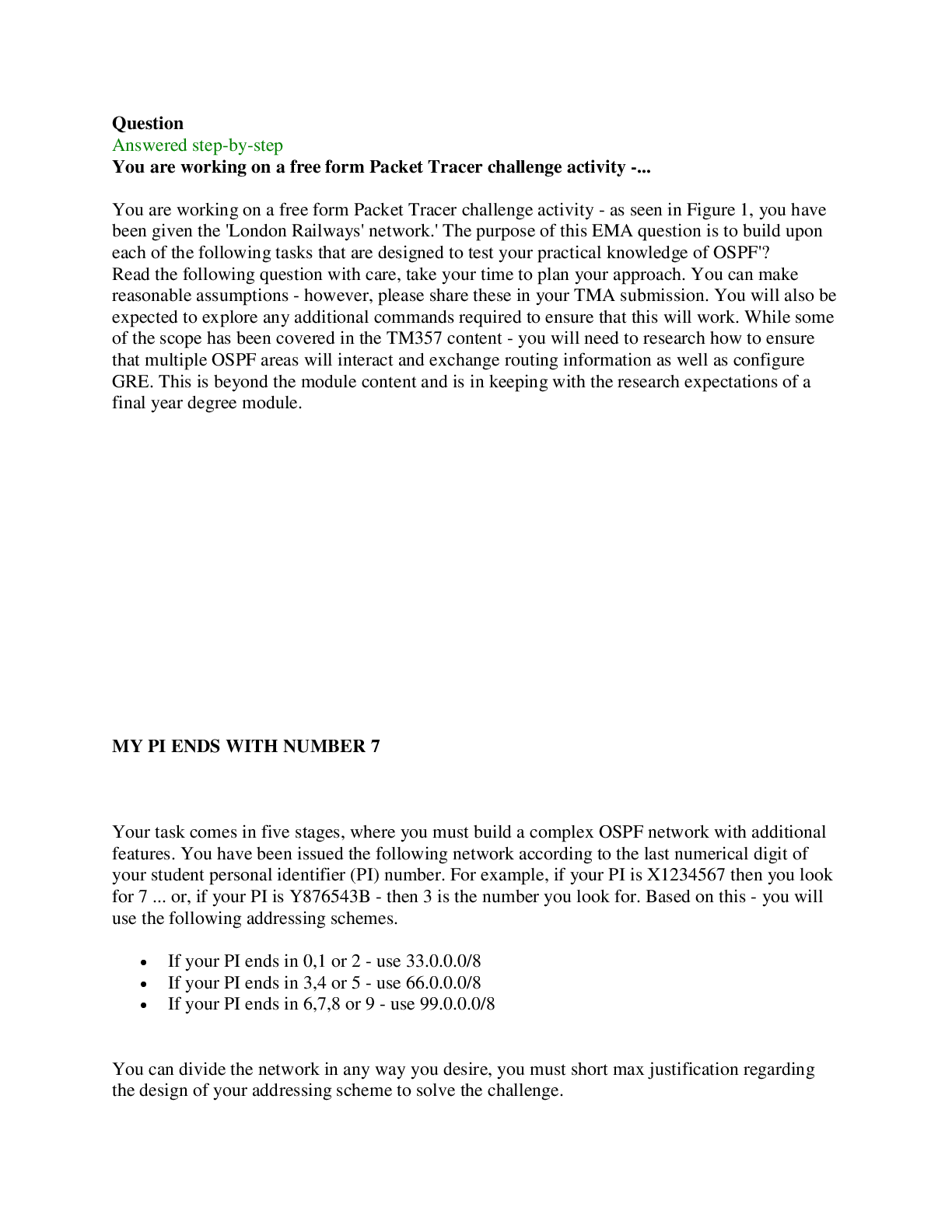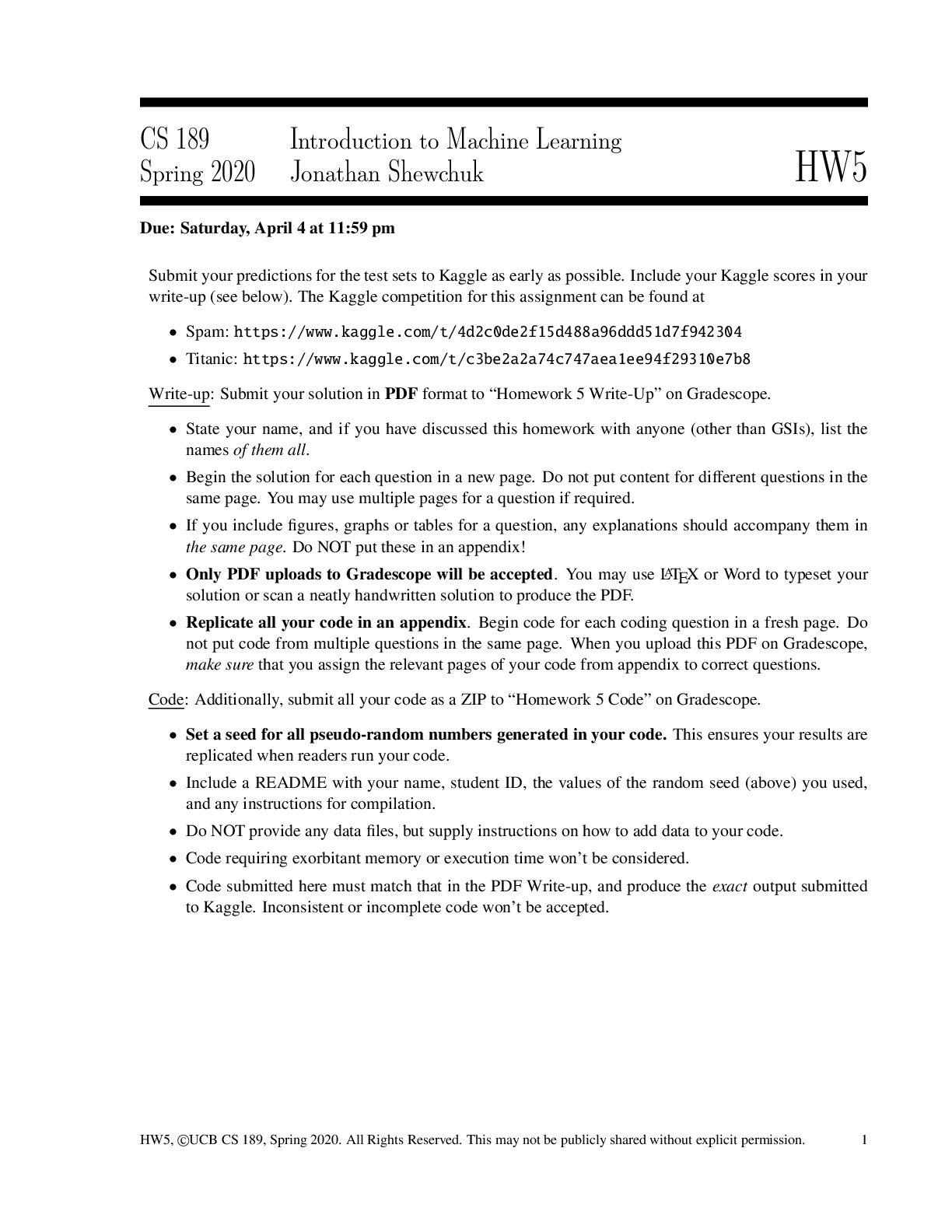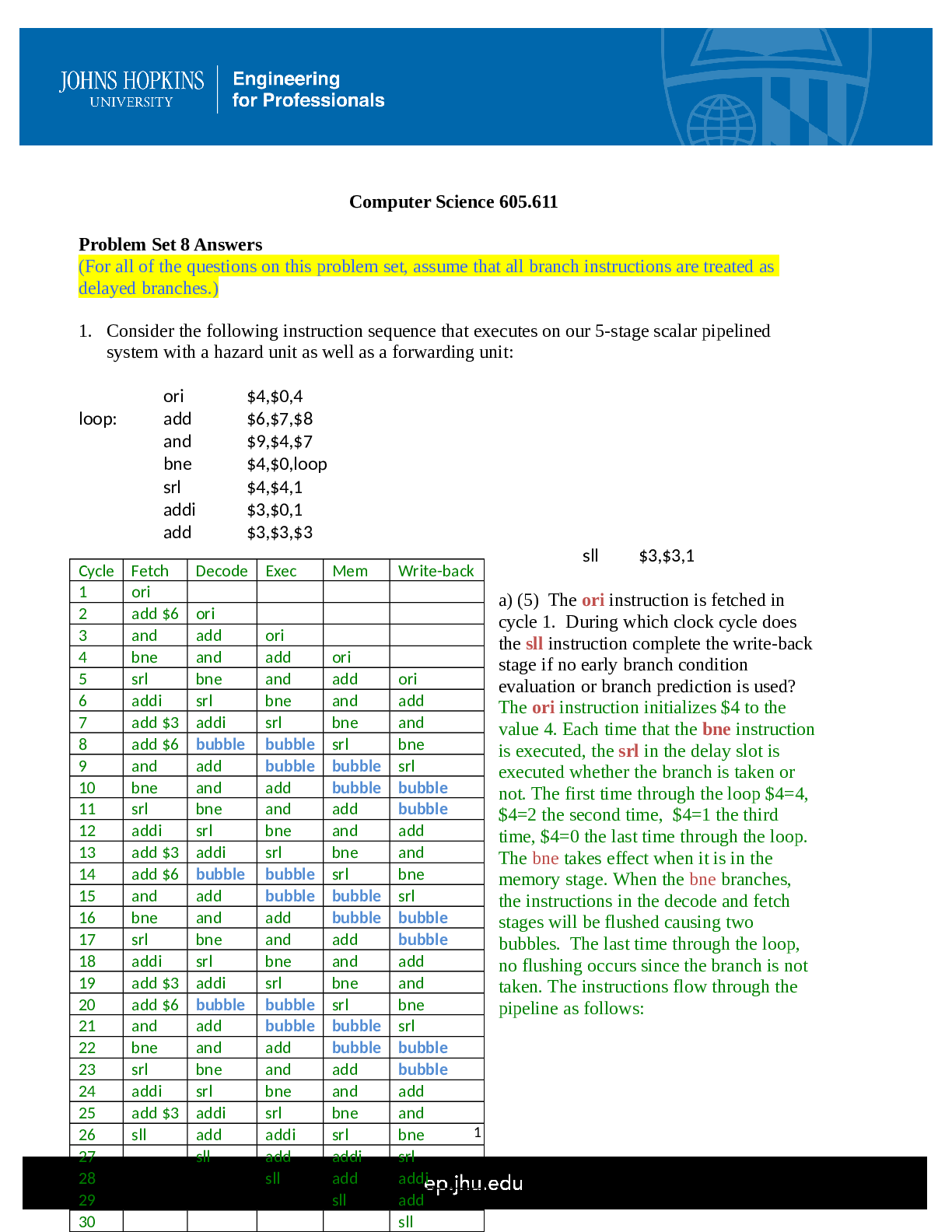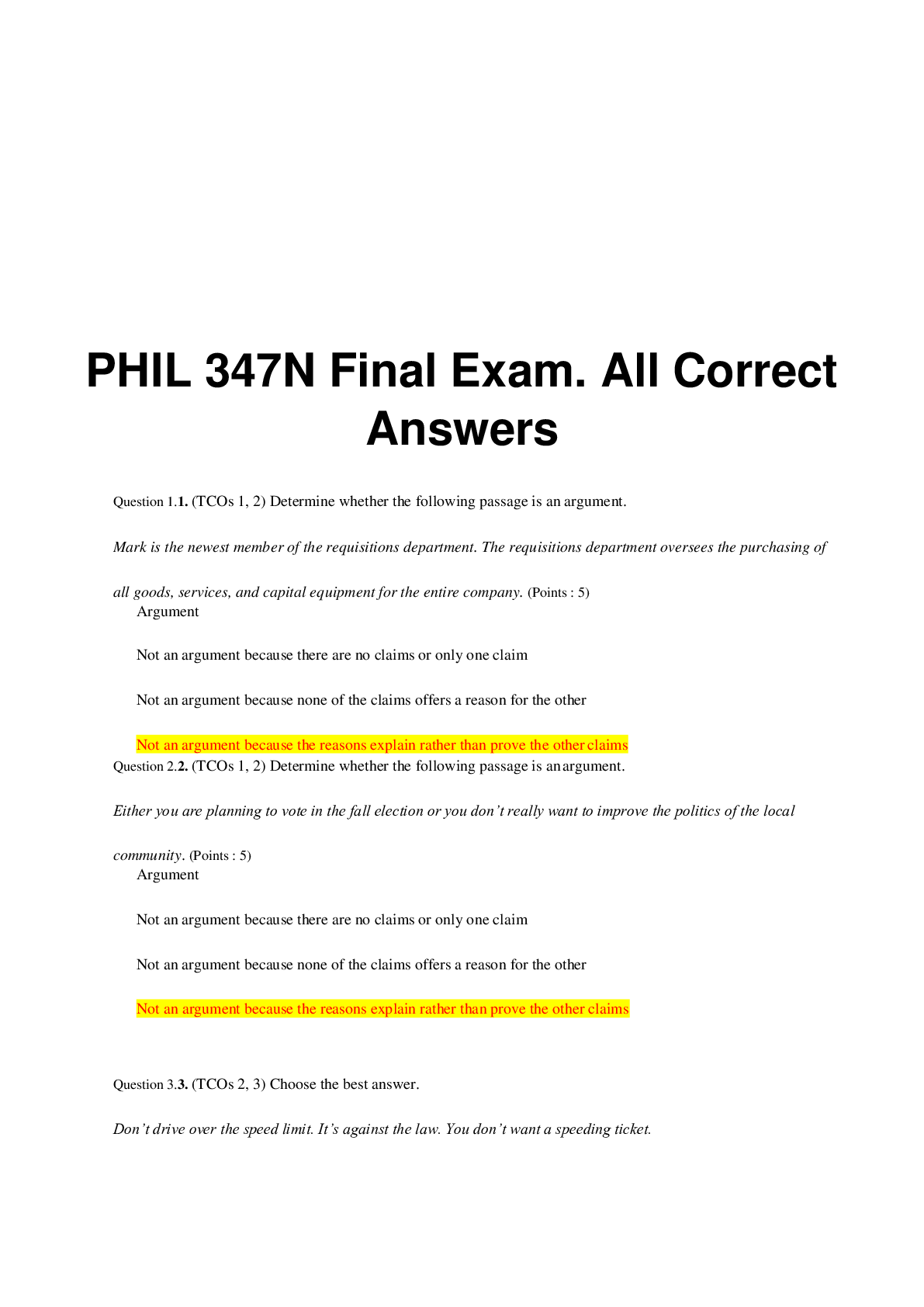Financial Accounting > QUESTIONS & ANSWERS > Cost Volume Profit Analysis (All)
Cost Volume Profit Analysis
Document Content and Description Below
Cost-Volume-Profit Analysis 3.1 Objective 3.1 1) Managers use cost-volume-profit (CVP) analysis to ________. A) forecast the cost of capital for a given period of time B) to study the behavior of ... and relationship among the elements such as total revenues, total costs, and income C) estimate the risks associated with a given job D) analyze a firm's profitability and help to decide wealth distribution among its stakeholders Answer: B Diff: 1 Objective: 1 AACSB: Analytical thinking 2) One of the first steps to take when using CVP analysis to help make decisions is ________. A) calculating the break-even point B) identifying the variable and fixed costs C) calculation of the degree of operating leverage for the company D) estimating the volume of sales to make a good profit Answer: B Diff: 2 Objective: 1 AACSB: Analytical thinking 3) Which of the following is true of cost-volume-profit analysis? A) The theory assumes that all costs are variable. B) The theory assumes that units manufactured are equal units sold. C) The theory states that total variable costs remain the same over a relevant range. D) The theory states that total costs remain the same over the relevant range. Answer: B Diff: 2 Objective: 1 AACSB: Application of knowledge 4) The selling price per unit less the variable cost per unit is the ________. A) fixed cost per unit B) gross margin C) margin of safety D) contribution margin per unit Answer: D Diff: 1 Objective: 1 AACSB: Analytical thinking5) In the graph method of CVP analysis, ________. A) The total revenue line starts at the origin and the total costs line starts at the fixed intercept. B) The operating income line starts at the origin and the total costs line starts at the fixed intercept. C) The breakeven point is at the fixed intercept where the total revenues line intersects. D) The operating income area is the section where the total costs line is above the total revenues line. Answer: A Diff: 2 Objective: 1 AACSB: Analytical thinking 6) Which of the following is an assumption of CVP analysis? A) Total costs can be divided into a fixed component and a component that is variable with respect to the level of output. B) When graphed, total costs curve upward. C) The unit-selling price is variable as it is subject to demand and supply. D) Total costs can be divided into inventoriable and period costs with respect to the level of output. Answer: A Diff: 2 Objective: 1 AACSB: Analytical thinking 7) Which of the following is true of CVP analysis? A) Costs may be separated into separate inventoriable and period components with respect to the level of output. B) Total revenues and total costs are linear in relation to output units. C) Unit selling price, unit variable costs, and unit fixed costs are known and remain constant. D) Proportion of different products will vary according to demand and supply when multiple products are sold. Answer: B Diff: 2 Objective: 1 AACSB: Analytical thinking 8) A revenue driver is defined as ________. A) any factor that affects costs and revenues B) any factor that affects revenues C) the only factor that can influence a change in selling price D) the only factor that can influence a change in demand Answer: B Diff: 1 Objective: 1 AACSB: Analytical thinking9) The contribution margin per unit equals. A) fixed cost - contribution margin ratio B) selling price - fixed costs per unit C) selling price - variable costs per unit D) selling price - costs of goods sold Answer: C Diff: 1 Objective: 1 AACSB: Analytical thinking 10) Which of the following is true about the assumptions underlying basic CVP analysis? A) Selling price varies with the demand and supply of the product. B) Only selling price and variable cost per unit are known and constant. C) Only selling price, variable cost per unit and total fixed costs are known and constant. D) Selling price, variable cost per unit, fixed cost per unit, and total fixed costs are known and constant. Answer: C Diff: 1 Objective: 1 AACSB: Analytical thinking 11) The contribution margin income statement ________. A) reports gross margin B) is allowed for external reporting to shareholders C) categorizes costs as either direct or indirect D) can be used to predict operating income at different levels of activity Answer: D Diff: 1 Objective: 1 AACSB: Analytical thinking [Show More]
Last updated: 2 years ago
Preview 1 out of 71 pages

Buy this document to get the full access instantly
Instant Download Access after purchase
Buy NowInstant download
We Accept:

Reviews( 0 )
$7.00
Can't find what you want? Try our AI powered Search
Document information
Connected school, study & course
About the document
Uploaded On
Aug 25, 2022
Number of pages
71
Written in
Additional information
This document has been written for:
Uploaded
Aug 25, 2022
Downloads
0
Views
27


























